Using AtticFoil™ As House Wrap
Did you know AtticFoil™ replaces Tyvek® as a house wrap behind siding?
Using a radiant barrier as a house wrap is rapidly gaining popularity and yes, you can add AtticFoil™ to the exterior of your home/building to maximize comfort by reflecting radiant heat on all sides. Because building science has taught us that it’s generally more critical for wall assemblies to be able to dry out than it is for them to block water vapor, we recommend a PERFORATED foil for these house wrap applications (*note: Tyvek® is also perforated).
On homes with vinyl siding or Hardie board siding, we most often see a retrofit application of AtticFoil™ as a house wrap. Since this is the case, you should consider that older homes/buildings will not have the efficient improvements newer homes do, so it might be worthwhile for you to use our house wrap as an air barrier and as a SECONDARY drainage plane; this occurs when you install AtticFoil™ over traditional house wrap, like Tyvek® for example.
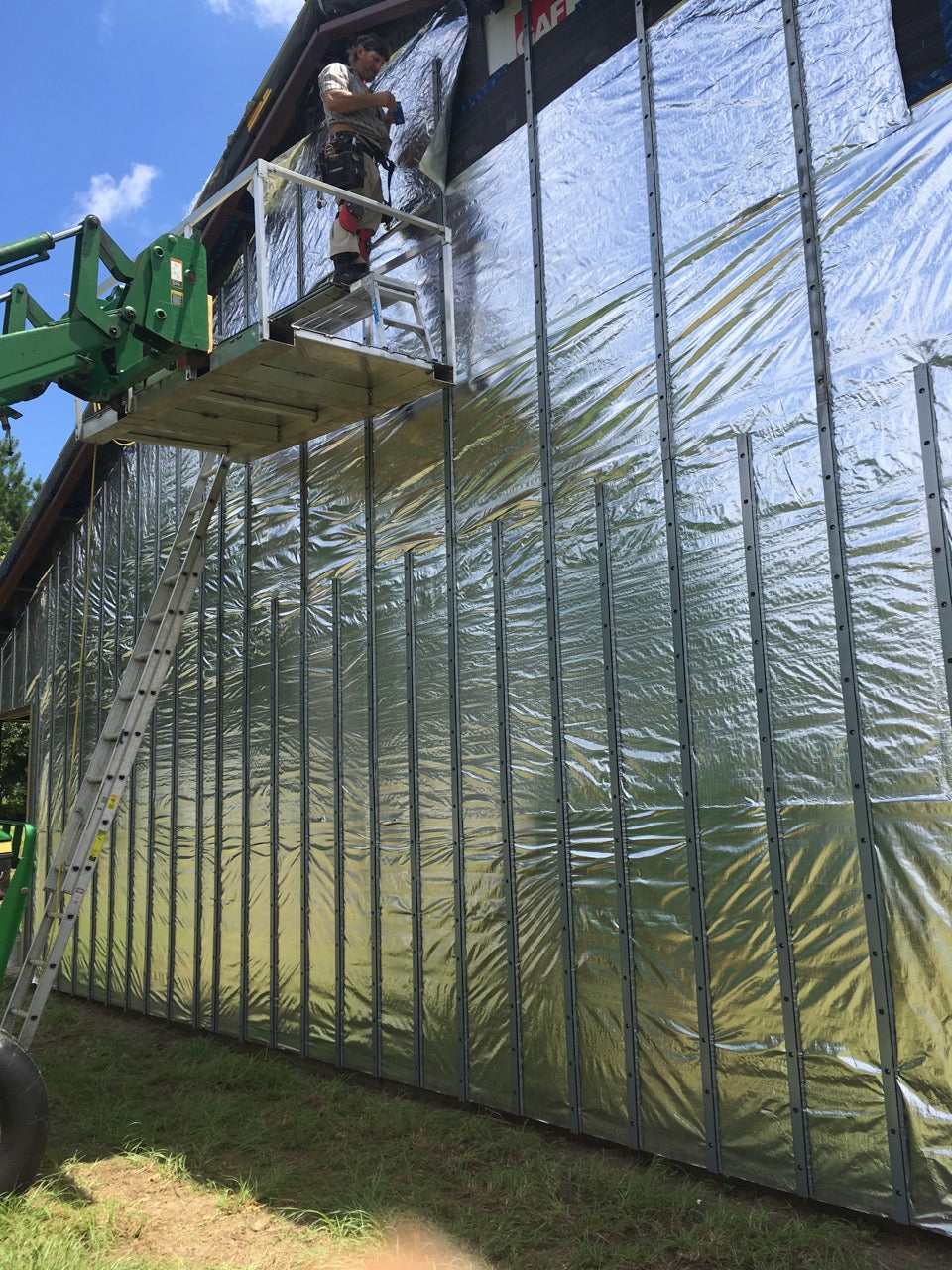
How to Install AtticFoil® Radiant Barrier Behind Siding
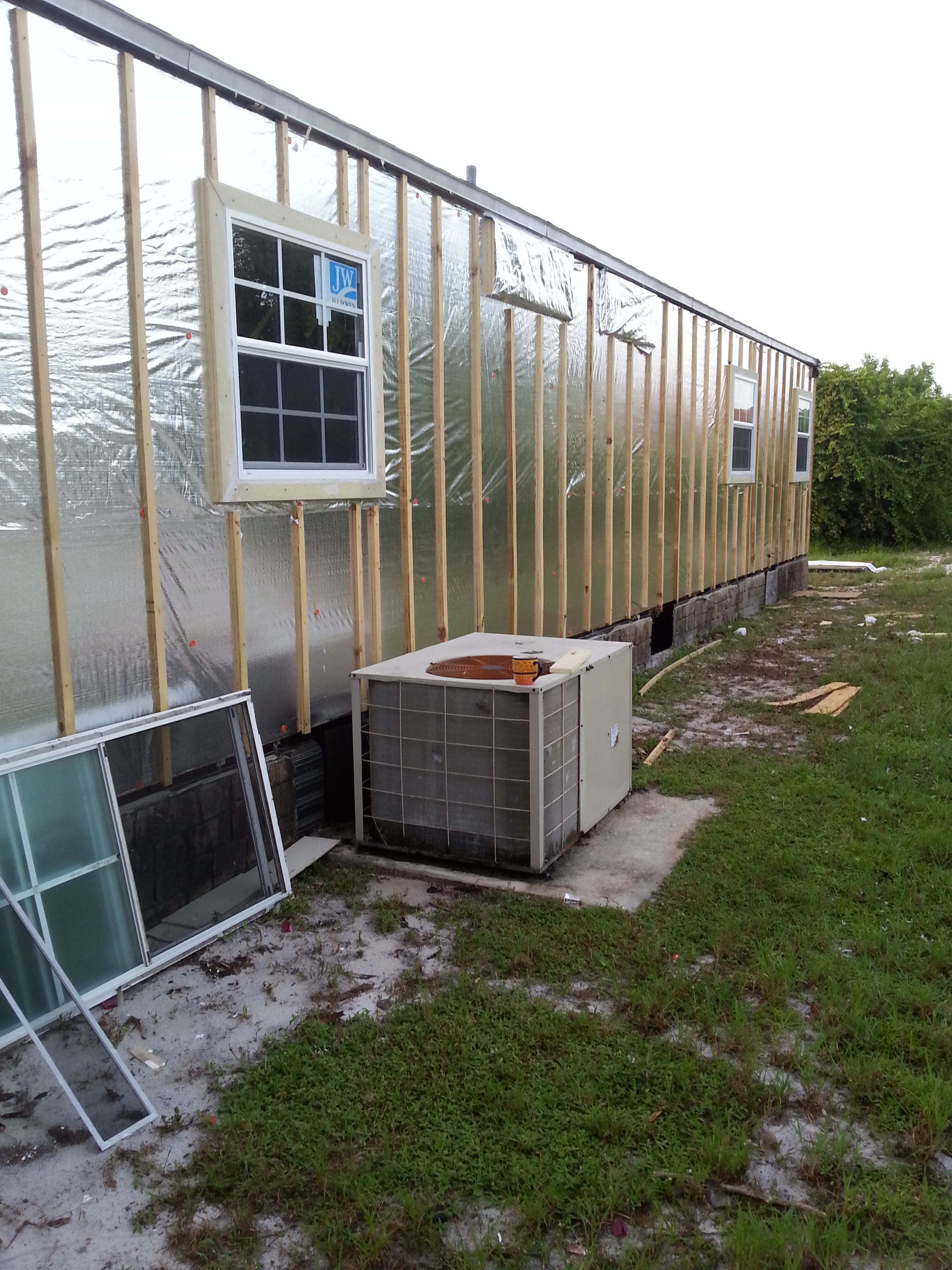
It is important to understand that claddings (exterior sheathing) should be open completely; you want air movement (circulation) behind the cladding because the more air circulation you have, the better the whole system works.
This principle goes hand in hand with the rule that radiant barrier must have an airspace on at least one side in order for it to work; it works best when the gap is between the foil and the exterior cladding. With siding materials, like vinyl or Hardie board, we recommend you use furring strips (thin wooden strips) that you can lay either perpendicular (horizontally) or parallel (vertically) across the wall studs to create the necessary air space behind the siding. Without an air gap, the foil will NOT WORK!
To install the House Wrap Radiant Barrier remember that you always want to put the foil closest to the source of heat you are blocking – for an exterior wall that would be closest to the outside. Unlike wrapping brick or stone exteriors with foil radiant barrier house wrap, siding material typically does not have a naturally occurring air gap behind it, so you must create one. This can be done with wooden furring strips to help give you about half an inch to an inch of air space. If your siding is beveled or has a natural air gap, then furring strips are not required, so long as you have a minimum of half of an inch of space.
TIP
Remember the foil only needs an air gap on one side in order to work.
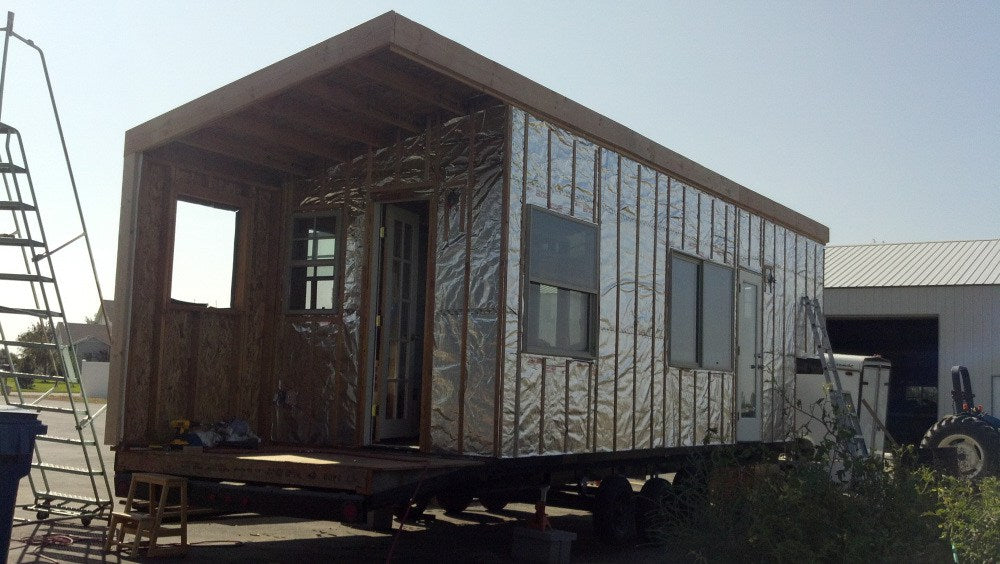
The most common way to install the foil is to staple it on first (to the wall studs or board) and then place the furring strips over the foil, followed by your siding material, be it vinyl or Hardie board. (Photos of this method of layering can be found on our DIY Project Gallery.) Layering the foil this way allows the foil to use reflectivity to block incoming heat from coming in to the wall cavity. In some cases people have added the spacers first, then the foil.
The Layers
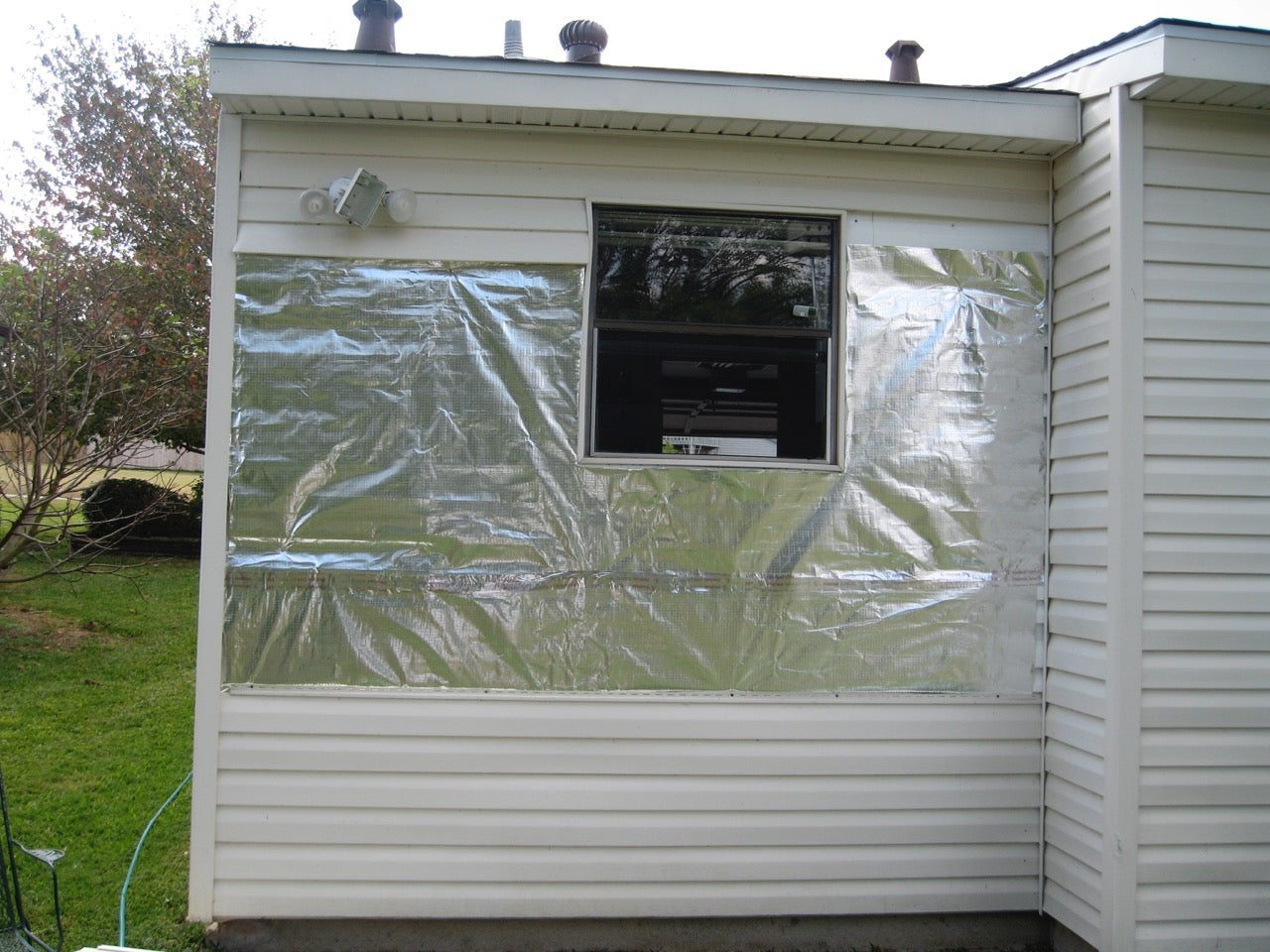
So the layers would go like this, from the outside to the inside:
- Siding (or Hardie Board)
- Air gap** (via spacers)
- AtticFoil™ radiant barrier (you can use either our double sided foil or our single sided foil for this application). If you use the single sided, remember the foil side must face the air gap, which in this example would mean the foil faces OUT, toward the siding.
- Tyvek® wrap (optional)
- Studs/board
- Interior wall cavity
**This air gap must not be compromised, or else the foil will not work. We recommend pulling the foil nice and tight/taught across the studs so you don’t have any sagging.
The Benefits
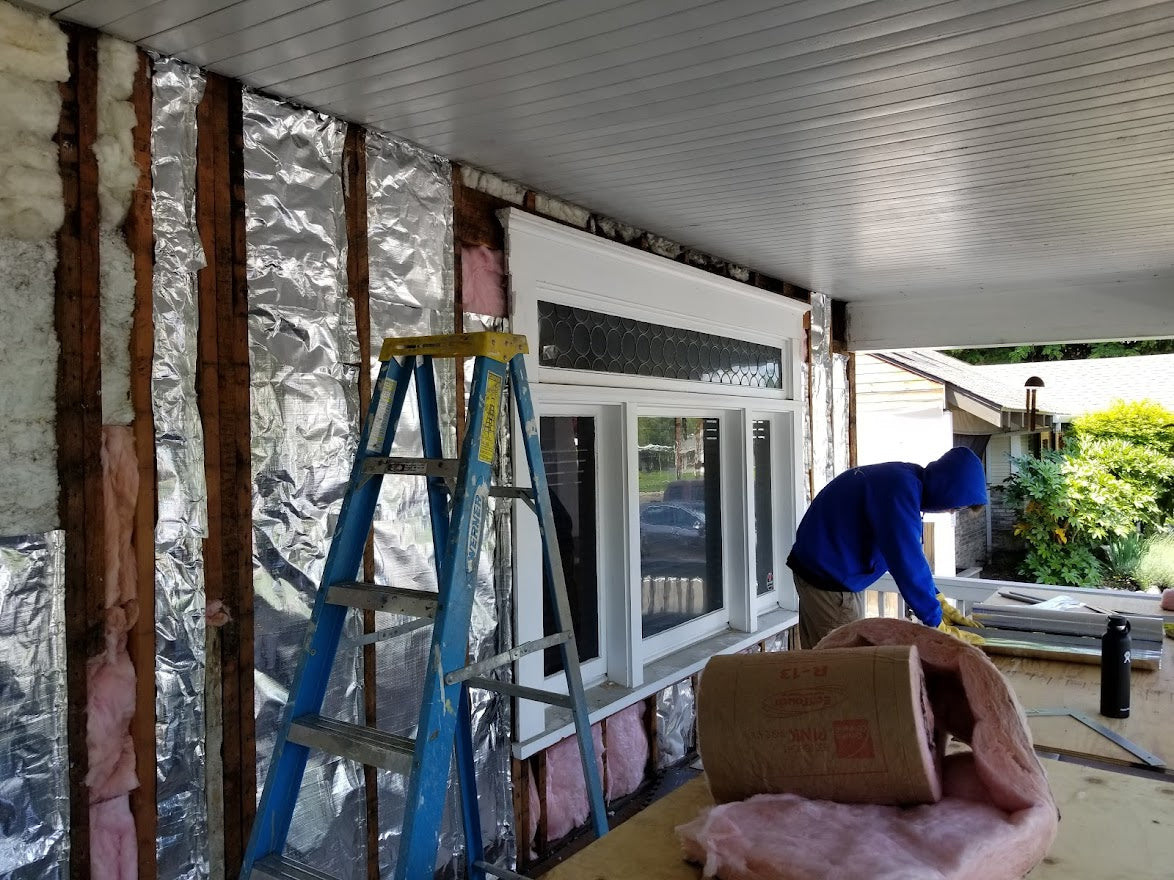
When you use AtticFoil™ as a house wrap, you can stop 97% of radiant heat from entering your home. Additionally, the foil keeps liquid water out of the assembly, while still allowing water vapor to pass through, since the foil breathes. You basically get all the same benefits of a Tyvek® wrap with the added benefit of blocking radiant heat!
You might also be interested in the following pages on our site:
Using Radiant Barrier House Wrap Behind Brick or Stone Walls
Radiant Barrier Myths: Cell Phone Reception and Radiant Barrier
Pricing Single Sided House Wrap Product
Why Does the Foil Need an Air Space?
If you’d like to see some examples of AtticFoil™ used as a house wrap behind siding, visit the customer DIY Project Gallery.




